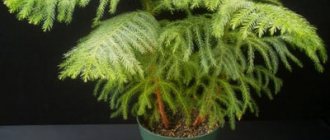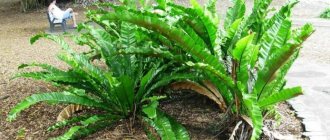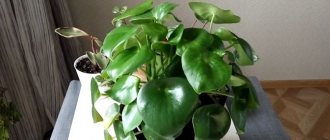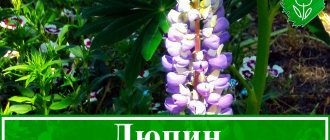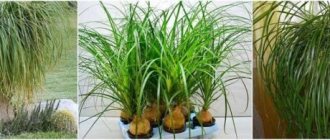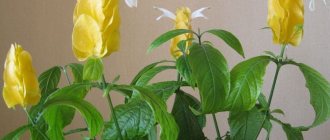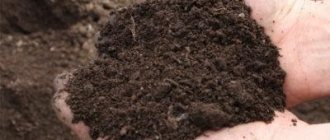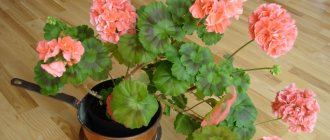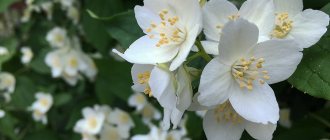Indoor Araucaria is an amazing indoor plant with needle-like leaves, in other words, it is reminiscent of an indoor spruce tree. Its homeland is Australia and the islands in the Pacific Ocean. This indoor plant is from the Araucariaceae family. A representative of conifers, it is successfully grown at home, since in winter it can tolerate elevated temperatures well.
Araucaria - grows in the form of a tree, with evergreen needles, attracting gardeners primarily with thin graceful branches dotted with flat, leathery, needle-shaped or crescent-shaped bright green leaves. Due to its appearance, it can easily replace a Christmas tree.
Due to their ability to reach significant sizes over time, only young plants are mainly used in rooms; adult specimens are transferred to a spacious room and must be planted in a large container.
There are twenty-five species of this plant in the genus - all of them are evergreen coniferous plants, they are best grown in large flower pots and tubs.
Araucaria Chilean, another name for this plant is Chilean pine - the height can reach up to 20 meters, and in its natural habitat more than 30 meters. The needles are dark green in color, the shoots are bent to the bottom, but the tips are directed upward. Chilean araucaria is most often grown at home.
Araucaria is tall - in the natural environment it grows up to 70 meters, but at home it does not exceed 1.5 meters in height.
Araucaria variegated - in natural conditions reaching 60 meters in height. Araucaria variegata, like Araucaria Chilean, is well grown at home.
Araucaria angustifolia - differs from the previous species in drooping weeping branches. The needles are thick, bright green, the needles are longer, 3-5 centimeters, densely covering the branches.
Araucaria Bidwill - most often found in open ground conditions in the southern regions of Russia. Bidwill's araucaria in natural conditions reaches 50 meters in height. The needles are 1.5-2.5 cm long, tough-skinned, pointed, obliquely attached to the shoots at their base.
Chilean araucaria is often grown indoors; it is better to immediately plant it in a spacious pot or tub.
What indoor flowers look like a Christmas tree?
What indoor flowers are similar to conifers?
Apart from the commonly sold cypress trees, species from the genus Araucaria of the Araucariaceae family are very similar to the New Year's tree. In indoor floriculture, the most common plant is Araucaria heterophylla = Araucaria heterophylla , popularly Norfolk pine.
Needles of different types of araucaria:
The main requirements for keeping this plant: bright lighting, regular watering without drying out or waterlogging the soil, keeping it cool in winter (+10-+16 degrees) and high air humidity.
Another plant that looks like a Christmas tree can be called Cunninghamia lanceolata, popularly Chinese spruce , Cypress family.
Kuningamia, again, like most conifers, prefers cool, bright rooms with high air humidity, and does not tolerate heat and acidic soils.
Externally, the Christmas tree may resemble some types of coniferous indoor plants. One of the main “substitutes” for the Christmas tree is thuja. Thuja is a coniferous shrub and has many varieties. It is grown at home and in the garden, very often together with juniper, which also looks like spruce, but it does not grow at home. Caring for this “Christmas tree” is not so difficult; the “domesticated” thuja has soft, bright green spines, and it grows with its branches upward.
Selagenella can be considered something “Christmas tree-like”. True, it will not grow too tall; it is a small indoor plant, very soft to the touch.
Another option is indoor cypress. It grows low and soft to the touch. But there are varieties and selections of tall plants.
But Araucaria is a tall plant with hard leaves, about 0.5 meters in height.
How to care
— The soil for this plant should be light and nutritious. We use peat, turf and leaf soil with the addition of sand. Take equal parts of soil and sand. Or you can purchase ready-made types of soil and mix a suitable soil mixture.
— Planting is carried out in a previously prepared pot, at the bottom of which there should be a layer of drainage. Add some soil and place the plant in the center of the pot. Next, add soil, lightly compacting it and pressing it with your hands. After planting, water generously and add soil if necessary.
— Araucaria is transplanted every four years. The best time to transplant araucaria is spring. If your plant grows in a large tub, then it is enough to replace the top layer of soil.
Indoor plants that look like a Christmas tree
The New Year holidays are over, the toys are put away, the Christmas tree is put away on the mezzanine until the next holidays. An artificial Christmas tree is certainly not bad, but how nice it would be to have a live tree in a pot at home and decorate it for the holiday for many years. Alas, the forest beauty does not like the microclimate of city apartments too much. So, is there really nothing that can be done about it? But it’s possible! There are indoor plants that look like a Christmas tree, but at the same time feel great in a city apartment or house. And I’ll tell you about some of them today.
How to propagate
— Reproduction can be carried out using several methods. We use cuttings or propagate by seeds. The best time for breeding is summer. When cuttings we use apical cuttings. They must be semi-lignified, they must be dried for several days and then planted in a mixture that includes peat and sand. Therefore, how to propagate araucaria is up to you. The araucaria plant propagates better by cuttings; it can also be propagated by seeds, but this is a long process.
Araucaria
In my opinion, araucaria is the most similar to a real Christmas tree. This is an attractive and easy-to-grow coniferous plant with stiff branches covered with spiny leaves. Araucaria grows slowly; at home it can reach a height of 1.5 meters.
The plant prefers cool temperatures and needs good lighting. Does not tolerate drafts. To ensure that the tree grows symmetrically, it is best to grow it as a single plant. In winter, araucaria needs to be sprayed from time to time. Watering is regular from spring to autumn and moderate in winter.
How to water
— Watering should be in sufficient quantity. By watering abundantly, the earthen lump should be saturated with moisture. It is necessary to ensure that the soil is always moderately moist. In winter, watering should be reduced.
— Feeding is done in the summer, once every twenty days. We use universal fertilizers.
Cypress
Cypress, I would call the plant “two in one.” In winter, it will successfully replace the New Year tree, and in summer, in the yard or at the dacha, a pot of cypress can be placed near an inflatable pool and it will play the role of a southern cypress. This is one of the few coniferous plants that do well in an apartment.
Cypress prefers cool weather and does not tolerate bright light. It is better not to place it on windows facing the sunny side. Watering should be moderate but regular, but you can spray the plant at least every day. If you live in an apartment and don’t have a dacha, then at least you need to take the cypress tree out onto the balcony in the summer.
Temperature
Heat is contraindicated for Araucaria ! In summer, the temperature should not exceed +20 degrees; in winter, +10+15 degrees will be optimal.
Did you know that the bamboo houseplant can grow without soil? Read about the intricacies of care in this article.
Many people ask about the features of transplanting Zamioculcas flowers; here you will find useful answers to this question.
Characteristics of coniferous species
Almost all coniferous trees are evergreen perennials. They have some features:
- modified needle-shaped leaves;
- high content of resinous substances in bark and wood;
- life span more than 100 years.
They reproduce by seeds set in cones. They are only covered with scales, but not protected by a closed cavity. This determines the group affiliation of the breed – gymnosperms. Pollination of ovules occurs with the help of wind.
The vegetative method of reproduction is not applicable for them; only cypress trees have this ability. Gymnosperms are one of the oldest groups of plants. According to scientists, their ancestors are extinct ferns.
The geography of distribution of the class is from the Equator to the borders of permafrost. Each climate zone is characterized by its own species.
The height of most trees, especially in the wild, often exceeds 100 m, but for summer cottages or garden plots, breeders have developed many low-growing and dwarf varieties.
Care after disembarkation
Immediately after planting the spruce, you must follow the care tips. Watering is carried out every 3 days. In the first few days it is necessary to shade the tree with paper. To maintain soil moisture, it is recommended to use pine mulch mixed with humus.
After planting in the ground, fertilizing is applied no earlier than 1 month. Nitrogen and potassium are used as fertilizers.
Why chamelacium crumbles
The plant may crumble due to improper watering or lack of light. Moreover, sometimes the flower can crumble on one side or in the middle. In this case, we need to analyze what is wrong. It is possible that watering is carried out unevenly, but only on one side and all the roots receive different amounts of water. If there is insufficient lighting, you need to turn the flower towards sunlight from time to time or organize uniform artificial lighting.
Did you know what colors daylilies go with? How to grow catharanthus from seeds, read the link
Chamelacium, although capricious, compensates for all care costs with its beauty. In addition, with a careful, caring and sensitive attitude towards its needs, it is not so difficult to understand what the flower lacks. If he feels comfortable, he will give you a scattering of beautiful flowers with a wonderful aroma.
Reproduction
propagated by seeds and cuttings.
Seeds are planted immediately after collection because they are not intended for long-term storage. In addition to the soil described above, a mixture of peat, sand and crushed charcoal can be used for planting seeds.
the soil surface is moistened and covered with a small layer of moss, which is periodically removed for ventilation. Germination time is from 2 weeks to 2 months.
For propagation by cuttings, take the upper, half-lignified branches. They are cut in the spring below the whorl and placed in the shade for 24 hours. After the expiration of the period, the cut site is cleaned of the resinous substance and sprinkled with crushed charcoal.
Then you can treat it with a root formation stimulator. Now the cuttings are planted in separate containers with sand and covered with glass jars or plastic bottles. It is necessary to regularly ventilate and moisten the cuttings. The rooting process can take up to 5 months.
Korean fir
This tree is very similar in appearance to Nordmann fir, but differs from it in its high level of winter hardiness - zone 4 (up to -35 degrees). In adulthood, Korean and Nordmann fir differ significantly from each other in height (the first does not grow above 15 meters, and the second will eventually reach 60 meters) and crown shape. But at a young age, seedlings of these species can only be distinguished by professionals.
Korean fir has the same flat, completely non-thorny, dark green needles, which on the reverse side also have a silvery color and two longitudinal stomata. Considering the above, we can only hope for the integrity of the sellers, who can correctly indicate the species of the “Christmas tree” on the label.
Korean fir is a very promising tree for the garden. In recent years, landscape designers are increasingly using it in their work, and amateur gardeners also cannot resist the beauty of this tree, which looks like a Christmas tree from a fairy tale.
In addition, Korean fir tolerates partial shade well, and as an adult it pleases with amazing erect cones that look like candles. The only nuance that is important to consider when planting this fir is the negative impact of polluted air on it, so it is better to place the “Christmas tree” in a suburban area.
Korean fir (Abies koreana). © FD Richards
Diseases and problems
The consequences of violating the rules of plant care lead to possible symptoms.
- The plant grows poorly when there is an excess of calcium. The tree must be replanted in suitable soil, watered with softened water, and the fertilizer changed.
- Very thin new branches - appear when there is a lack of nutrients. Increase the amount of fertilizing, change the soil.
- Curvature of the trunk - uneven lighting. Rotate the container with the plant 90 degrees every week.
- The shoots turn yellow and dry out due to insufficient air humidity. Increase the number of sprays, place the pot in a pan of water.
- The needles dry out and fall off - the reason may be either low air humidity or insufficient watering.
Yew
Representatives of the species live mainly in the Northern Hemisphere. Like all conifers, they retain their modified green foliage all year round. The plants are interesting because of their lifespan - over two thousand years - and their fruits - the only conifers that form berries rather than cones.
Yew renews itself extremely poorly - seeds that fall from the mother tree almost never germinate. The reason is that pine litter, when decomposed, synthesizes substances that kill seedlings.
Yew
Only a few species are grown for decorative purposes: short-leaved, berry, pointed, and Canadian. Although the initial height of yew trees exceeds the 10-meter mark, breeders have developed miniature varieties. Hybrids with a height of 30-100 cm are popular.
Yew tolerates frost well and is indifferent to lighting. Experienced gardeners plant it among other shrubs and low-growing trees to reduce the risk of freezing. Yew does not like stagnant water, acidified soil, wind, drought, dusty, polluted air. It also does not emit essential oils characteristic of all conifers, and therefore has only decorative value. In most yews, all above-ground parts and roots are poisonous!
Torreya
The plant is rarely grown in our country - it is heat-loving, and the climatic conditions of the Black Sea coast of the Caucasus are most suitable for it. The most common types are nutmeg and nut torrey.
It is bred exclusively for practical purposes - the nuts are edible and are also used in the production of paints and varnishes.
Torreya is demanding to care for, but new varieties with variegated needles are gradually winning the hearts of summer residents. It grows well on any soil, except highly acidified. There are no requirements for soil fertility. Loves good lighting and reliable protection from the wind. It tolerates moderate frosts well; it only requires mulching the tree trunk circle with a thick layer of organic matter.
Planting and replanting Canadian spruce in open ground
Planting spruce in open ground is carried out in the spring. May is considered the most suitable. To plant painlessly for spruce, you should follow these recommendations:
- choose a site on a hill. To prevent the needles from fading in the sun, it is better to plant them in a shaded area;
- thoroughly clear the area of stones and weeds;
- dig and prepare a planting hole up to 35-40 cm deep;
- Place broken bricks or large pebbles at the bottom of the hole;
- mix peat, humus and leaf soil in equal proportions and fill the hole a quarter full;
- Remove the plant from the pot and carefully place it in the prepared hole using the transfer method. Sprinkle with soil and water with warm water.
IMPORTANT! Saplings older than 3 years do not tolerate transplantation into open ground well and may lose their decorative characteristics.
Nordmann fir
In Europe and the USA, this type of fir is the main Christmas tree and is often called the “Danish tree”. And if in our country the New Year tree mainly means pine, then abroad it is Nordmann fir.
The main advantage of fir over other coniferous trees, such as spruce or pine, is that its needles do not fall off for a long time after the complete death of the tree. In addition, its needles are not prickly at all, they have a deep dark green color, and the back side is covered with a silver-gray coating.
Thanks to the fluffy crown and rounded needles, this Christmas tree looks almost like a toy, and that is why it is so popular. In the West, there are entire farms dedicated to growing this type of fir for sale during the New Year holidays. Such “Christmas trees” are most often cut down “to the very root,” like our pines, and sometimes they are grown in containers and offered as living New Year trees.
You can distinguish such a fir by its non-prickly dark needles and two characteristic light stomata-strips on the back of each needle. In addition, fir needles are flat, and not tetrahedral, like most types of spruce.
In Russia, Nordmann fir grows exclusively in the Caucasus Mountains, which indicates its heat-loving nature. This species belongs to winter hardiness zone 6 (not lower than -23 degrees), which means there are serious problems with wintering in the middle zone.
In places protected from strong winter winds and shelter in the first years after planting, this tree has some chance of not dying in winter. But still, in some frosty winters, the crown will suffer greatly from freezing, and will not be so fluffy and beautiful, the trunk may be bent. Of course, this fir will never reach such a height as in its homeland (60 meters) in a cold climate.
Nordmann fir (Abies nordmanniana). © Conifers2
Araucariaceae
An ancient family of conifers, according to modern scientists their age exceeds hundreds of millions of years. The main part of the genera grows in the Southern Hemisphere, and only one - in the Northern Hemisphere. Lives in tropical and subtropical forests.
Agathis
The trees, whose height often reaches 70 m, easily tolerate drought and grow well in the shade. The soil is suitable loamy, loose, drained. Planted in spacious areas protected from the wind. The lower temperature limit is -20 °C.
Agathis is interesting for its variety of leaf shapes - from narrow, pointed leaves typical of conifers to lanceolate.
Araucaria
Unlike agathis, araucarias do not tolerate frost and are intended mainly for home growing. “Tub” specimens rarely grow more than 2 m in height.
In the garden, pots with araucaria are used to decorate flower beds or areas, verandas with good diffused lighting.
Read more about araucaria and its care here.
